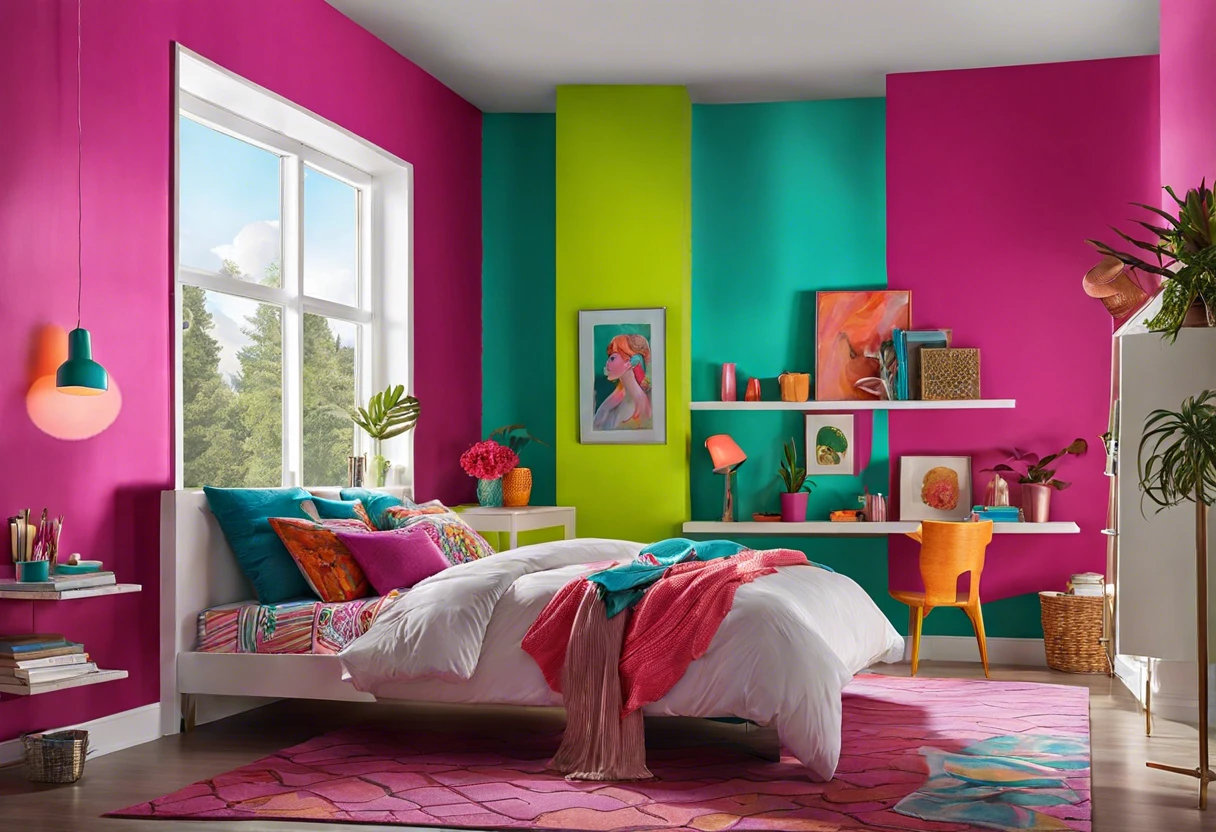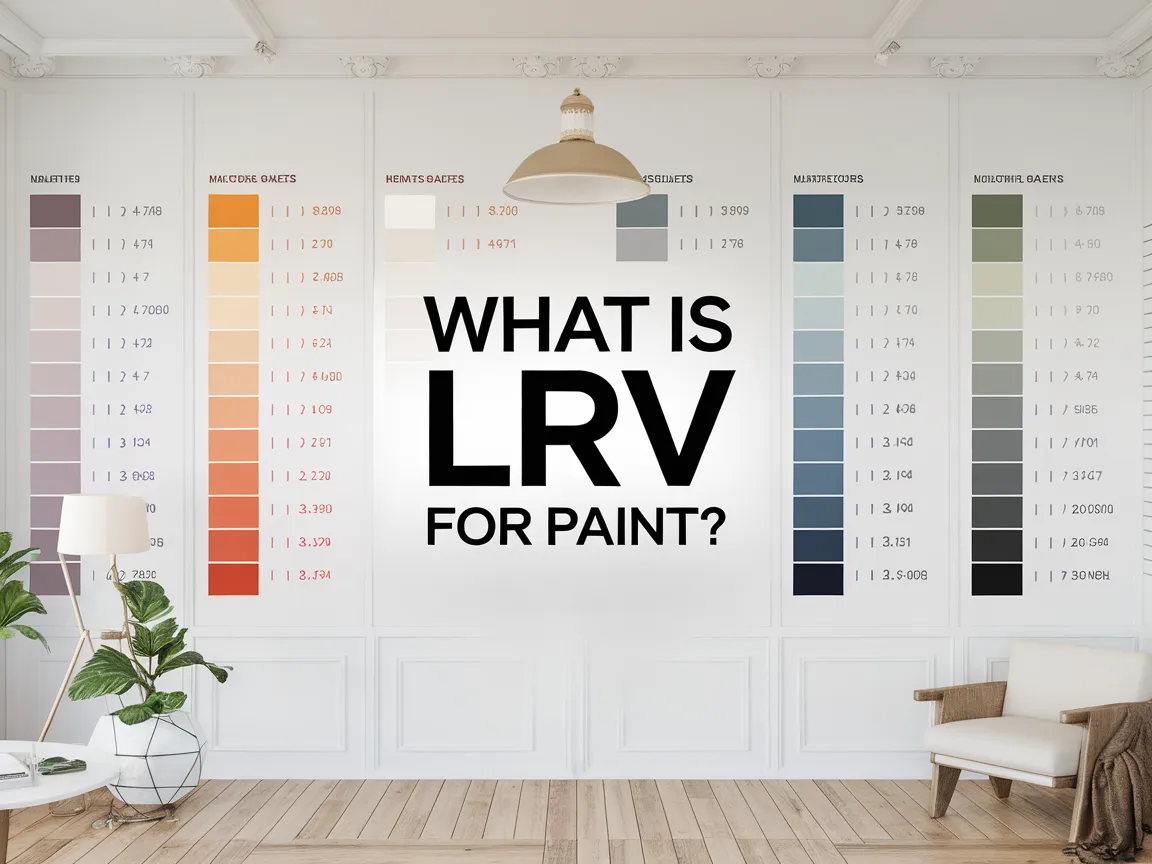Can You Use Primer As Paint?
Primer is like a special coat for walls. It helps paint stick better, just like how your jacket keeps you warm!
Now, can you use primer as paint effectively? It’s super important to know the answer before diving into a project. I once tried it on a small wooden table, and while it didn’t turn out bad, it wasn’t the look I wanted. Lessons learned, right?
In this guide, you’re going to discover what primer is, considerations before using it, steps for safe application, color palettes, types of primers, common issues, and creative DIY project ideas. Plus, we’ll address questions like can you poly over paint and how to soften paint brushes. Let’s dive into the colorful world of primer!
Contents
- 1 Can You Use Primer As Paint?
- 2 What is Primer and Its Purpose?
- 3 Considerations Before You Start Using Primer As Paint
- 4 Steps to Safely Use Primer As Paint
- 5 Types Of Primers and Their Relation to Painting
- 6 Factors Affecting the Use Of Primer As Paint
- 7 Common Issues When Using Primer Instead Of Paint
- 8 Understanding the Limitations of Primer as Paint
- 9 Cost vs. Value of Using Primer as Paint
- 10 Environmental Impact of Using Primer Vs. Paint
- 11 Durability Comparison: Primer vs Paint
- 12 Best Practices to Get the Most Out of Primer
- 13 Finishing Touches After Using Primer As Paint
- 14 Creative DIY Project Ideas Using Primer As Paint
- 15 Frequently Asked Questions About Using Primer As Paint
- 16 Conclusion
- 17 Useful Resources
Can You Use Primer As Paint?
No, you can’t use primer as paint, but you can use it as a base. Primer’s designed to create a smooth surface for paint to stick better. It’s not made for coloring; instead, it prepares the surface. Always top it with actual paint for the best results. If you’re curious about specific paint matching techniques, check out how paint brands cross-match colors.
What is Primer and Its Purpose?
Primer is a preparatory coating applied to surfaces before painting. It typically contains 50-70% solids, which help fill pores and create a smooth surface for the topcoat.
You might wonder, can you use primer as paint? I once tried using primer on a piece of furniture. While the results looked decent at first, they didn’t last long.
When I used it for an outdoor project, I thought if it’s durable, it should withstand the elements, right? Unfortunately, I found that using primer alone can result in faded colors and a patchy finish. Have you considered how primer differs from regular paint? They’re like apples and oranges—both are important but serve very different purposes.
Considerations Before You Start Using Primer As Paint
What do you need to consider before starting?
- High-Quality Primer: You need a reliable primer like Zinsser Bulls Eye 1-2-3 or Sherwin-Williams PrepRite ProBlock. These create a good base for paint.
- Rollers and Brushes: Invest in ⅜ inch (9.5 Mm) nap rollers and angled brushes like Wooster Silver Tip for proper application and coverage.
- Masking Tape: Use durable tape like FrogTape to prevent bleed-through. It’s essential for clean lines where you don’t want primer.
- Drop Cloths: You’ll need plastic or fabric drop cloths to protect your surfaces from drips and spills, keeping your space tidy.
So far we covered the factors to consider before using primer as paint. Let’s look at the steps for safe application next.
Also See: What Are Different Types Of Painting Styles?

Steps to Safely Use Primer As Paint
Here are the steps to determine if primer can effectively replace paint.
-
Assess the Surface to Be Painted
Check the surface carefully. If it’s smooth, like wood or metal, you can achieve great results using primer as a paint guide.
For rough surfaces, think twice! Primer may fill imperfections but can leave an unfinished look, so decide wisely.
-
Select the Right Type Of Primer
Choose between oil-based or water-based primer based on your needs. Water-based is ideal for indoor rooms, while oil-based excels in areas requiring high durability.
If you want a tint that closely matches paint, use a tinted primer for better coverage—this saves you from extra layers!
-
Prepare the Area for Painting
Clear your workspace! Ensure no dust or debris will ruin your finish. Cover floors and furniture with protective sheets.
From my experience, prep is crucial. I’ve skipped this step and trust me, the result was messy! Clean surfaces help primer adhere smoothly.
-
Apply the Primer Evenly
Use a roller, brush, or spray gun—your choice! Aim for uniform coverage, about 0.1 mm (0.004 In) thick is ideal.
Lightly sand between coats for a flawless finish. Be patient and let the primer dry completely; rushing can lead to smudges.
-
Finish With a Paint Sealant (if Needed)
If you’re using primer only for aesthetics, you might skip this step. However, a sealant can help preserve that fresh look, especially in high-traffic areas.
I recommend a clear acrylic sealant for added durability on surfaces needing protection while maintaining color and sheen.
So far we covered the safe application of primer as paint. Let’s look at the different primer types and their painting implications next.
Types Of Primers and Their Relation to Painting
Let’s explore the types of primers: oil-based, water-based, shellac-based, and spray primers.
-
Oil-based Primers
Oil-based primers are excellent for sealing and blocking stains. They dry slowly, usually taking 24 hours, but bond well with wood and prevent tannin bleed.
-
Water-based Primers
Water-based primers dry faster than oil-based options, typically in 1-2 hours. They’re eco-friendly and ideal for flat or lightly textured surfaces but struggle with heavy stains.
-
Shellac-based Primers
Shellac-based primers effectively tackle tough stains like smoke and water damage. They provide excellent adhesion but can be sensitive to moisture and dry quickly.
-
Spray Primers
Spray primers are convenient for small projects and hard-to-reach areas. They’re user-friendly and offer a smooth finish but may be less effective on porous surfaces compared to brush-on types.
From my experience, oil-based primers work wonders on old furniture. They create a strong base for paint, eliminating imperfections underneath and offering a lasting finish.
You should now have a good understanding of different primer types and their painting applications. In the next part, we’ll discuss factors influencing primer usage.
Factors Affecting the Use Of Primer As Paint
What factors influence the choice between primer and paint?
-
Surface Application: Rough surfaces need a more flexible paint; primer may not adhere properly.
-
Color and Finish: Primer usually comes in lighter shades and has a different sheen, which affects the final appearance.
-
Durability: Primer isn’t made for wear and tear, leading to faster fading or peeling.
-
Blocking Stains: Using primer as paint may prevent effective stain blocking, causing spots to show through.
We covered the factors influencing primer usage as paint. We will now cover common issues encountered when using primer instead of paint.

Common Issues When Using Primer Instead Of Paint
Last summer, my friend used primer as paint in her living room, hoping to save some money. By week two, she noticed peeling and uneven surfaces.
To fix it, she stripped the primer, sanded the area, and applied high-quality acrylic-latex paint instead. Proper prep (Preparation) is key—don’t skip it!
Understanding the Limitations of Primer as Paint
It’s crucial to know the downsides of using primer as paint. Let’s break down the limitations to ensure you make an informed choice.
- Sheen Variation: Primers usually have a flat finish, while paints offer different sheens like satin or gloss. This impacts how light reflects off surfaces.
- Color Retention: Primer colors fade more quickly than high-quality paint. Expect your vibrant look to dull after repeated exposure to sunlight.
- Durability: Most primers aren’t designed for wear and tear, making them unsuitable for high-traffic areas.
- Surface Feel: Primer leaves a more porous texture compared to smooth paint. This can affect the overall appearance and feel of your project.
Cost vs. Value of Using Primer as Paint
Certainly, cost matters! Let’s compare the price of primer versus traditional paint while considering long-term value.
| Product Type | Average Cost (USD) | Longevity (Years) | Best Use Cases |
|---|---|---|---|
| Primer | $15 – $30 | 1 – 3 | Undercoat, drywall sealing |
| Standard Paint | $30 – $80 | 5 – 15 | Final coat, visible surfaces |
Ultimately, while primers save you upfront cash, they may not last as long. Think about what you want for your space! Prioritize quality and durability for the best bang for your buck.
Environmental Impact of Using Primer Vs. Paint
Thinking green? Let’s discuss how using primer as paint affects the environment.
| Product Type | VOCs (Volatile Organic Compounds) Level | Eco-Friendly Options |
|---|---|---|
| Primer | High (up to 300 g/L) | Low-VOC options available |
| Standard Paint | Moderate (50-200 g/L) | Zero-VOC paint options available |
Using primer, especially oil-based, can release more VOCs than regular paint. If you’re eco-conscious, explore low-VOC primers or choose water-based options for less impact. Zero-VOC paints are also a smart choice!
Durability Comparison: Primer vs Paint
Let’s dive into how durable primers compare to paints. Understanding wear can save you time and money.
| Attribute | Primer | Standard Paint |
|---|---|---|
| Wear Resistance | Low | High |
| Color Retention | 1-3 years | 5-15 years |
| Adhesion Power | Excellent for surfaces | Great but not primer-level |
| Finish Variety | Usually flat | Satin, glossy, etc. |
While primer has impressive adhesion, its durability and finish options don’t hold a candle to standard paint. So, always top your primer with a layer of paint for a lasting and great-looking result! If you want to master the technique of applying paint smoothly, check out these acrylic painting techniques.
Best Practices to Get the Most Out of Primer
Want to maximize your results with primer? Here are some handy tips.
- Use Tinted Primers: Consider tinted primers that closely match your final color to improve coverage and reduce the number of coats needed.
- Mix with Acrylic: Blend primer with acrylic paint for a custom finish. This can help enhance durability while adding color.
- Layering: Apply multiple thin coats rather than a thick one for better adhesion and uniformity.
Finishing Touches After Using Primer As Paint
After using primer as paint, let it dry for at least 24 hours. If it feels tacky, wait longer for a smooth finish.
Inspect the surface for inconsistencies like bubbling or peeling. Use products like Zinsser Bulls Eye 1-2-3 to seal troubled spots effectively.
A helpful tip: Always sand (Smooth) lightly between coats for better adhesion, especially when applying actual paint and not over-dried primer.
Creative DIY Project Ideas Using Primer As Paint
Want to spruce up your old furniture? Try using primer to create a funky, patterned accent chair or a unique piece of wall art.
To tackle these projects, grab some primer, a brush, and maybe some sponges or stencils. You should spend about $15-$30 (USD) and put in a few hours to make something truly eye-catching!
Looking for alternatives? You can mix primer with acrylic paint for a bit of color or use it to create a textured finish on walls. From my experience, it’s a neat way to experiment with surface design without breaking the bank! If you’re interested in transforming surfaces beyond walls, you might want to explore painting cast iron bathtubs.
Also See: Can You Mix Primer With Paint? Short Guide Here!
Frequently Asked Questions About Using Primer As Paint
What Happens if You Use Primer As Final Coat?
What happens if you use primer as a final coat? Using primer as a final coat can lead to issues like peeling and poor adhesion. Primers often lack the durability and finish of regular paint, which may cause wear in one to three years.
Can All Primers Be Used As Paint?
No, all primers can’t be used as paint. Some primers are formulated solely to grip surfaces and lack the color and finish usually found in paints. Specific primers may perform better in particular conditions, while others might not adhere well or offer UV protection. If you’re considering painting a challenging surface like a bathtub surround, you’ll want to explore specialized painting techniques.
How Long Does Primer Last As a Paint Substitute?
How long does primer last as a paint substitute? Generally, primer lasts one to three years. Depending on exposure to elements, this lifespan may vary. Without a proper topcoat, you risk fading and deterioration. If you’re curious about creating custom paint colors, you might want to explore how to mix paint shades.
Is Primer More Affordable Than Regular Paint?
Is primer more affordable than regular paint? Yes, generally, primer is cheaper. A gallon of primer averages about $15 to $30 (USD) compared to $30 to $80 (USD) for conventional paint, making it a budget-friendly alternative. If you’re exploring painting techniques for different surfaces, you might want to explore painting polycarbonate plastic panels.
Can You Add Color to Primer?
Can you add color to primer? Yes, you can add color to primer. Some users opt to tint primer, using a few ounces of paint color. This mixes well while allowing for custom shades and better coverage. When experimenting with tinted primers, it’s crucial to know how to properly clean your painting tools afterward.
What Are the Advantages Of Using Primers?
What are the advantages of using primers? Primers improve adhesion and hide surface imperfections. They also help block stains and ensure long-lasting finishes. This layer makes a noticeable difference when applying topcoats.
Can You Paint Over Primer Without Sanding?
Can you paint over primer without sanding? Yes, you can paint over primer without sanding. Most primers create a suitable surface for paint, allowing you to proceed without significant prep. Just check the manufacturer’s guidelines for best results. However, be cautious about potential chemical interactions, as some primers might require skin absorption risks with solvents.
Conclusion
We covered the purpose of primer, considerations before using it as paint, safety steps, recommended color palettes, types of primers, factors affecting its use, common issues, finishing touches, and creative DIY projects.
In summary, while you can use primer as paint, it differs from traditional paint. Always ensure you select the right primer according to your project requirements for an optimal finish and enduring color.
For further insights and guidance, explore Paint Answers.
Useful Resources
- Loomis, A. (2011). Figure Drawing for All It’s Worth. New York, NY: Titan Books.
- Is it possible to paint an interior wall white with primer and not use a coat of paint over it? – Quora
Experienced interior designer with 15+ years in transforming spaces, blending artistry with expertise in color and design. Rhode Island School of Design graduate, specializing in restorations and modern makeovers.
Priming, Topics




